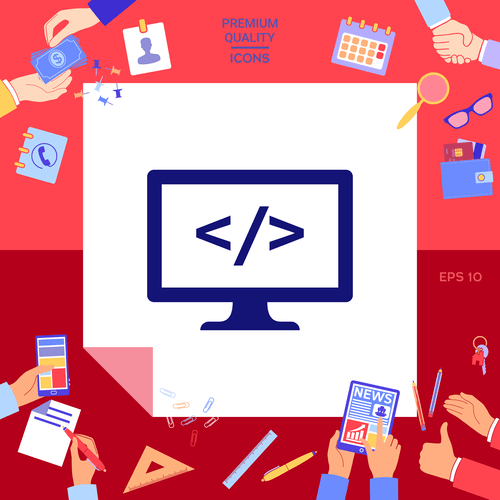
Content
It’s rather a matter of determining the degree of complexity they require in order to implement them. If you aim for a highly effective solution, you should use a combination of both approaches by selecting their best features. You can use metrics to identify areas of your process that would merit further attention. Once you’ve made a change, it’s good practice to keep monitoring the relevant metrics to verify whether they had the intended effect. Keeping deployments small shows that your team is committing regularly, with all the benefits that entails. However, as story estimates are not comparable across development teams, this metric should not be used to measure overall deployment size.
Build a highly integrated DevOps toolchain with observability, automation, and AI at the core to help accelerate the speed of delivery, improve code quality, and increase DevOps throughput. It helps you in tracking unusual requests, multiple ci/cd pipeline monitoring login attempts, logging from unknown devices, and any suspicious user activity like a developer trying to access the admin account. By monitoring user activity, you can ensure that the right user is accessing the right resources.
This simple reality is driving the adoption of new techniques and technologies, particularly CI/CD (Continuous Integration & Continuous Delivery). CI/CD is an AUTOMATION exercise that enables delivery speed, better business capability, and ultimately improved quality for custom applications. It follows, therefore, that the more https://globalcloudteam.com/ automated and seamless the monitoring of a business application is, the easier it is to complete the CI/CD cycle and restart the loop of improving the application. Once the software is released into production, Continuous Monitoring will notify dev and QA teams in the event of specific issues arising in the prod environment.

Unlike failures, a defect count refers to the number of open tickets in your backlog classified as bugs. It can be further broken down by issues found in testing or staging and issues found in production. Monitoring the proportion of failures out of the total number of deployments helps measure your performance against SLAs. Failed deployments that result in unintended downtime, require the deployment to be rolled back or require a fix to be released urgently. The count of failed deployments is used to calculate the change failure rate . A related metric, mean time to detection , measures the time between a change being deployed and your monitoring system detecting an issue introduced by that change.
CircleCI is highly scalable with an easy-to-understand and use web interface. To further understand the possibilities it offers, I recommend going through CircleCI concepts and best practices. Aside from the Java tools mentioned above in the Java code repository section that act as a CI/CD orchestrator there are also Java monitoring tools specifically designed for CI/CD.
It’s a simple way of ensuring things are healthy, giving visibility to the numbers you need - without overwhelming people with data. When numbers get worrying, alerts can still be set up so that triggers are put in place. Just a reminder that the specific metrics being showcased below relate purely to the CI process. Measuring things like application performance is still important and should be measured, just not as part of your CI process. Some data sources provide a data pipeline tool that can be used to push data to the data source.
It ensures that applications run optimally by monitoring their performance and detecting potential issues. Cloud APM systems collect data on how various application, software, and hardware components allow developers to detect and troubleshoot issues and optimize the application performance. Businesses often deal with distributed systems, composed of many smaller, cross-company services. So, teams need to monitor and manage the performance of the systems they build as well as that of dependent systems.
AppDynamics Cloud is purpose-built to observe distributed and dynamic cloud native applications and infrastructure at scale. If you apply CI/CD strategy to all of your infrastructure and applications, you can assure that your entire environment is created in the same way. Make that such pipelines have proper security measures in place, such as issuing only least-privilege permissions. Quality metrics allow you to determine the quality of the code that is being pushed to production. While the main point of a CI/CD pipeline is to accelerate the speed at which software is released to gain faster feedback from customers, it's also critical to avoid releasing flawed code. In the reactive approach, updates to monitoring systems are here a reaction to incidents and outages.
Additionally, even after logging, Sentry’s data tends to lack context for issues that affect the user experience. A modern software development process consists of many steps built on each other. Two of the more significant steps in this process include integrating code from different developers into a single codebase, and deploying that codebase to some kind of infrastructure. Support for open standards includes native support for the OpenTelemetry protocol, W3C trace context, and Jaeger. OpenTelemetry and open standard data sources future-proof your observability investments by providing maximum flexibility and reducing the cost of future integration efforts. The Ansible OpenTelemetry plugin integration provides visibility into all your Ansible playbooks.

APM solutions help organizations to gain better visibility into their application performance and help to make data-driven decisions to improve the overall user experience. The metrics generated by APM also help organizations to detect and avoid application performance issues before they harm business users. Datadog CI Visibility provides deep insight into the health and performance of your CI environment.
SAST is a white-box testing approach for finding software defects, vulnerabilities, and weaknesses by examining the code from the inside using SAST tools. This concept is powerful because it allows parts or all of a pipeline to be automated, speeding up the process and eliminating errors. In other words, the purpose of a CI/CD pipeline workflow is to make it easier for businesses to automatically deploy software numerous times each day.

© Copyright 2021 by Get Smart Retirement Group| Design by Fitser